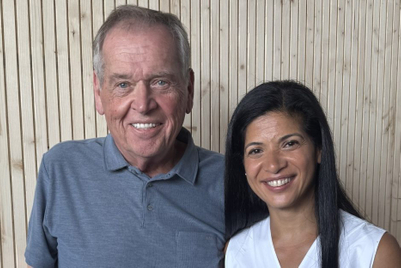
In Australia, we’re witnessing significant behaviour change as brands liberate themselves from the corporate pompous that has plagued their past.
Modern 21st-century brands, despite being born and raised in technology, possess refreshingly human characteristics. Their founders have celebrity status—not because they demand it or pay for it, but because their staff and customers evangelise their success. They think differently, demonstrating through products there is always a way to re-invent and prosper. They’re also community obsessed. Without exception, their actions speak louder than words.
So, it is little wonder long established brands are seeking to evolve in much the same way.
Standing for something meaningful, emotional and relatable is opening brands up to occupy a greater space in the mind of consumers. Whilst appearance alone is superficial and quickly recognised as opportunistic, brands that authentically align with their audience’s beliefs and have baked a purpose in to their product and service attributes, both inside and outside the organisation, are making great inroads.
Take ANZ. Whilst I must disclose my personal bias towards the brand (as its AOR), I equally need to acknowledge the impact and influence it has on societal issues—always relatable to its role in people’s lives, but far beyond the transactional nature of banking.
ANZ's #equalfuture work, whilst growing market share of superannuation accounts was a motivation, was fundamentally social purpose-driven. ANZ led the charge by shining a light on financial inequality of women despite its own practices in this area being sub-standard. It pledged to do better and encouraged peers to do the same. The campaign became the catalyst for a Senate Inquiry into the ‘Economic Security of Women in Retirement’, with ANZ invited to make the opening submission.
In contrast Telstra, Australia’s largest telco, once a leader in the marriage equality debate, outraged its public after a backflip on the issue. The backlash was fierce, with the posturing played out across all media channels. A week later, Telstra’s CEO admitted publicly to the mistake, and agreed Telstra should support marriage equality. A backflip on a backflip leaves you questioning how genuine the intent could be.
| See our exclusive ranking of the top 100 Australian brands |
That said, brands do have the right to be wrong. Those that can admit fault, can laugh at themselves and engage in an open dialogue, are often more endearing because with that comes an unexpected and refreshing honesty.
And the need for this radical openness has never been greater. In Australia, consumers generally lack a source of truth—from our political system where leadership spills result in non-elected prime ministers to contradictory views on education, healthcare and our future economic state. Many brands default to a generic position in their quest to create mass appeal, but sanitise their brand personalities in the process. Political correctness has instead become the dictator.
Thank goodness for brands like Bonds. In 2013, when Bonds broadened its brand proposition to include bras, it simply used the word ‘boobs’. Although placed under investigation by the Advertising Standards Board, for claims it objectified women, the case was thrown out. Bonds marketing general manager said, ‘’The word ‘boobs’ is part of the Aussie vernacular and is one of the most common everyday terms used by Australians…”. The brand's most recent work for men’s underwear features talking testicles. Let’s face it, blokes don’t talk about their underwear, but they will talk about their ‘boys’. In a pair of ill-fit underpants, I’m told it can be a cruel, cruel existence.
Increasingly, we are seeing more brands grant themselves permission to offer consumers some light relief. Ironically, they may just find themselves having the last laugh.
The final parallel I’d like to draw between brands and humans is the opportunity for generosity. Brands have always had a commodity on knowledge. Many have traded on it—think Colonel Saunders secret herbs and spices. As humans, we are naturally drawn to people and things that teach us. The challenge for brands is to find simplistic ways to transform their knowledge whilst remaining meaningful for mass consumption, but also to be confident enough that opening the brand up will draw people in, rather than exposing them to competition.
So, that’s the state of play in Australia right now. Brands that are more human will appeal more to the humans they seek to attract. No longer organisational up—but organisational out. Those that can’t pinpoint and capitalise on the intersection between their brands and what matters most to their audiences will continue to distance themselves from the competition.
Just like in any human relationship, to have a place in someone’s world, you’ve got to earn it, and then keep working at it.

Kimberlee Wells is chief executive officer of Whybin TBWA Group Melbourne


.jpg&h=334&w=500&q=100&v=20250320&c=1)


.png&h=334&w=500&q=100&v=20250320&c=1)




.png&h=334&w=500&q=100&v=20250320&c=1)





.png&h=268&w=401&q=100&v=20250320&c=1)


